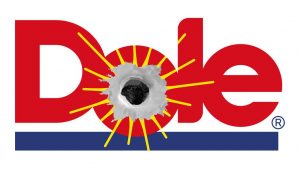By Marí Roma Villa, Editor
Hawaii Hispanic News
HONOLULU, Hawaii — The U.S. Department of Energy Solar Decathlon challenges 20 collegiate teams to design, build, and operate solar-powered houses that are cost effective, energy-efficient, and attractive, from all over the world.
 The winner of the competition is the team that best blends affordability, consumer appeal and design excellence with optimal energy production and maximum efficiency.
The winner of the competition is the team that best blends affordability, consumer appeal and design excellence with optimal energy production and maximum efficiency.
Team Hawaii’s – Hale Pilihonua
Team Hawaii is proud to have been selected as one of 20 university teams worldwide to compete. The event takes in Washington D.C. this September.
The team is comprised students from the UH – including Tiffany Iiga (Mexican descent) and Richard Ordonez (Colombian descent). They – along with the other talented UH students on this team – will represent Hawaii in this international competition.
For two weeks, teams of college and university students from across the U.S. and the
world will compete to design, build, and operate the most affordable, attractive, effective,
and energy-efficient solar-powered house.
The competition will highlight affordable homes that combine energy-efficient construction and appliances with renewable energy systems that are available today. It also supports the Administration’s goal of creating a clean energy economy, while saving American families and businesses money and reducing our dependence on fossil fuels.
” These students are tomorrow’s leaders in helping develop a clean energy economy,” said Energy Secretary Steven Chu. “Their innovative projects will help raise public
awareness about energy efficiency, help save consumers money and reduce carbon pollution.”
The selected teams and their projects represent a diverse range of design approaches, building technologies, and geographic locations, climates and regions – including urban, suburban and rural settings. They also aim to reach a broad range of target housing markets, including low-income, disaster relief, retirement, and more.
A panel of engineers, scientists, and experts from DOE’s National Renewable Energy Laboratory evaluated applications for the 2011 competition. Teams were required to
meet specific criteria to demonstrate their viability, including their ability to: design and build an innovative, entirely solar-powered house; raise additional funds, to support the
project through a well-integrated curriculum; and assemble a team necessary to carry the project through to completion.
In addition, a panel of professionals from American Institute of Architects, National Association of Home Builders, the U.S. Green Building Council, building industry media, and the American Society of Heating, Refrigerating, and Air-Conditioning Engineers evaluated conceptual designs from prospective teams. The results of their evaluations,
combined with scores based on the four criteria listed above, determined the 2011
Solar Decathlon teams.
Each team has to design and build a solar-powered house. The houses will be setup on the National Mall this fall, and will be judged there, by a panel of experts according to criteria within 10 contest categories. The houses will be open to the public for tours. The Solar Decathlon supports interdisciplinary education and research in renewable technologies, fosters public awareness of sustainable design, and encourages adoption of renewable energy technologies in today’s houses.
According to the Hawaii team’s website, the design is to address residential needs in Hawaii’s tropical climate, the University of Hawaii’s semi-monocoque house, named Hale
Pilihonua (which means a home that will connect land and water), is a sustainable and affordable solution for middleincome homebuyers.
The shell, or semi-monocoque, structure is:
• Made of bio-based, fiber-reinforced polymer
• Strong and lightweight
• A tight, well-insulated thermal envelope
• Resistant to damage from corrosion, termites, rot, and floods, which are common in tropical environments
• Highly buoyant and able to float in the event of flooding
• Insulated with Low-E glass to reduce heat loss at night.
The house’s exterior structure consists of louvers that provide daytime shading, water-cooled photovoltaics that harvest energy, and solar thermal collectors for hot water.
Additional sustainable innovations featured in Hale Pilihonua include: phase-change material for thermal storage, intelligent occupancy sensing, and energy-conserving lighting controls and entertainment.
The functional nature of Hale Pilihonua is demonstrated by an integrated aquaponics system that both enhances the atmosphere and supports sustainable food production.
The U.S. Department of Energy Solar Decathlon recently announced the dates
for its 2011 event. They are:
• Opening ceremony: Thursday, Sept. 22, 2011
• Public exhibit: Sept. 23 through Oct. 2, 2011.
These dates are the original event dates and enable teams to begin assembling their houses at 11 p.m. on Tuesday, Sept. 13.
“Now that we’ve confirmed the dates, people can start making plans to come to Solar Decathlon 2011,” said Richard King, Solar Decathlon director. “We plan to make this event bigger and better than ever, so please keep checking the Web site for updated details as we draw closer to the event.”
We spoke to one of the electrical engineering students from Team Hawaii. Tiffany Iiga summarized the importance of the project’s goal.
Iiga said, “Team Hawaii is focusing on the sustainability facets in each segment of the project. This means incorporating and using Leadership in Energy & Environmental Design (LEED) standards in architecture, engineering, and construction to monitor power consumption that will enable us to optimize efficiency. We are even incorporating
aquaponic system, which is an integrated aquaculture – growing fish, and
hydroponic – growing soilless plants, system that mutually benefits both environments, this way the homeowner will be able to grow their own food.”
Team Hawaii is finalizing its design – that can be seen at www.solar.hawaii.edu/ — and is ready to construct the home, but they need help.
If you or your organization might be interested in supporting our Hawaii’s team efforts,
please contact: http://blog.arch.hawaii. edu/solar/
In this project, Latinos are not only in the house they’ve designed and are building the house!




